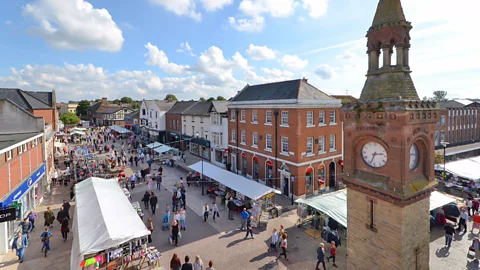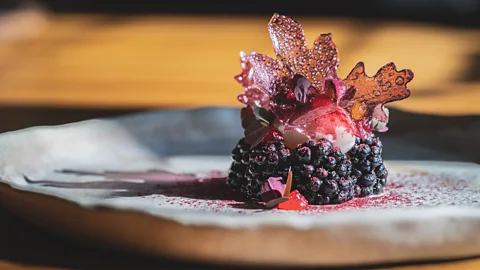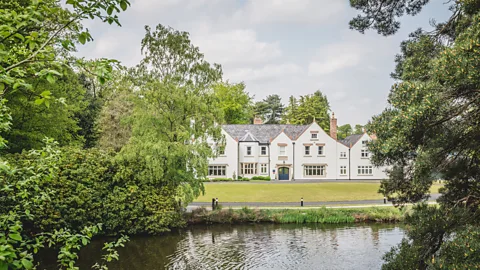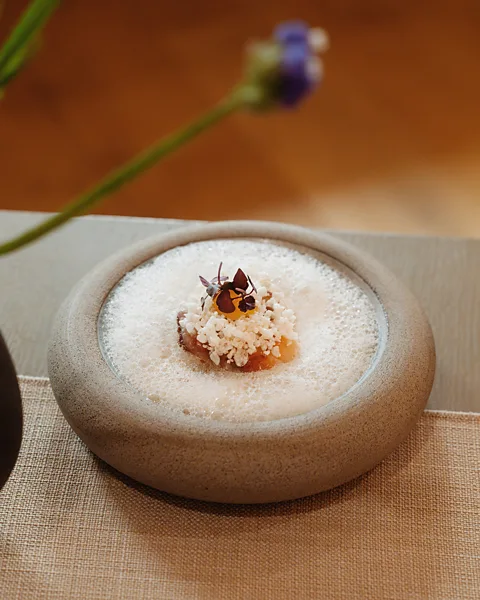Britain's tastiest town: Where Michelin chefs and gingerbread queens reign
 Visit Lancashire
Visit LancashireHome to three Michelin-starred restaurants and a royal gingerbread legacy, the unassuming Lancashire town of Ormskirk is fast becoming the UK's most delicious destination.
When it comes to UK destinations for a gourmet weekend away, there's a new name on the lips of serious foodies. Forget the metropolitan streets of Chelsea, Mayfair or even Edinburgh. Britain's latest gastronomic hotspot is in the rural hinterlands of deepest Lancashire.
Holidaymakers journeying to this historic county in north-west England – a key location in the English and Industrial revolutions – would have traditionally been heading for Blackpool, the classic British seaside resort whose best-known epicurean delight is Blackpool Rock, a tooth-shatteringly tough cylindrical stick of boiled sugar and glucose syrup.
But, for those with more refined palates – or more delicate dental work – the tastiest rewards are to be found in Ormskirk, a bustling market town that was once a Viking settlement, and in Aughton, the small village next door.
It's in this small village where Mark Birchall serves as chef patron of Moor Hall, a produce-driven restaurant within the grounds of a Grade II-listed, 16th-Century manor house. And at this year's Michelin awards, he was the only chef in Britain and Ireland to have been awarded a third Michelin star. As such, he has become one of only 10 chefs in the country (and fewer than 150 in the entire world) to hold the three-star accolade, a designation signalling that, according to the tyre company's inspectors, a restaurant is worth making a dedicated journey for.
 Moor Hall
Moor HallNo stranger to recognition, Moor Hall was voted Best Restaurant in England in the 2023 National Restaurant Awards, and also possesses a green Michelin star for the sustainable cooking practices used to create its 18-course tasting menu. Additionally, Birchall's "neighbourhood restaurant", The Barn (offering more casual dining at a lower price point), is a mere 30 second stroll around the lake from Moor Hall and possesses a Michelin star of its very own too.
As if that weren't enough, less than 10 minutes' walk away is Chef Tim Allen's restaurant sō-lō which has a Michelin star as well, bringing the total to a rather stellar six in the space of less than half a mile.
World's Table
BBC.com's World's Table "smashes the kitchen ceiling" by changing the way the world thinks about food, through the past, present and future.
So what makes the food so special in this part of Lancashire, I ask Birchall as he forages for micro herbs and other ingredients on Moor Hall's six-acre country estate, dotted with secluded luxury garden rooms where diners can stay.
"Aughton and Ormskirk have a deep-rooted connection to the land, and that plays a massive part in why the food here is so special," he tells me. "The landscape, the soil, the weather – it all contributes to the quality of the produce. We're lucky to have incredibly fertile, well-draining soil, which means the fruit and vegetables – particularly leafy greens, brassicas and root veg – even the grass that feeds the livestock, are all packed with flavour."
 Moor Hall
Moor HallIndeed, the West Lancashire coastal plain between Preston and Southport is often referred to as "the salad bowl of England". According to the National Farmers Union, England's north-west region s for 15% of the country's food production, leading them to call it "Britain's farming powerhouse".
"The climate, too, plays its role," Birchall continues. "We get just the right balance – enough rain to keep things abundant, but not so much that it drowns the land. That allows for a longer growing season, and when you combine that with generations of skilled farmers who understand how to work with the land, you get outstanding ingredients. It's that connection between produce and place that really sets the region apart."
Allen agrees with Birchall, with whom he consulted before opening sō-lō. He has seen an influx of foodies not just from London (which is a little more than two hours away by train) but from right across the globe. "We get people coming from America, Mexico, Norway, Finland, even Singapore," Allen tells me.
"But also, because we're located midway between Liverpool and Manchester – whose football teams (Everton, Liverpool, Manchester City and Manchester United) are massive – you get a lot of people travelling for the football. And many of them, it turns out, quite like eating Michelin-starred food."
Perhaps unsurprisingly, these discerning fans eschew the plastic platefuls of pie and chips usually consumed on the terraces to partake of Allen's altogether more elevated offerings; dishes made with ingredients such as Louet Fessier oyster emulsion, Oscietra caviar and salt-baked celeriac (which he employs somebody to grow purely for sō-lō's seven-course tasting menu).
 sō-lō
sō-lōBut this part of Lancashire offers more than the ultra-modern cordon bleu cuisine of Moor Hall and sō-lō; travellers in search of the area's deepest culinary roots may find them at the famous Omskirk Market. Held on Thursdays and Saturdays, it is one of the country's oldest (King Edward I granted it a Royal Charter in 1286) and is where you can sample the town's original claim to culinary fame: gingerbread.
As far back as 1732, recipes for the spicy baked treat were being ed down through generations of Ormskirkers. Sellers – almost exclusively women identified by their white shawls and aprons – would tout fresh gingerbread to engers on the stagecoaches that stopped at the inns along Aughton Street on their way from Liverpool to Preston. When Ormskirk railway station opened in 1849, the women switched to targeting train engers.
More like this:
• The English wine that's rivalling Champagne
"They would make their way along the platform, loudly knocking on all the carriage windows crying out 'Gingerbread! Who will buy my freshly baked gingerbread">window._taboola = window._taboola || []; _taboola.push({ mode: 'alternating-thumbnails-a', container: 'taboola-below-article', placement: 'Below Article', target_type: 'mix' });
